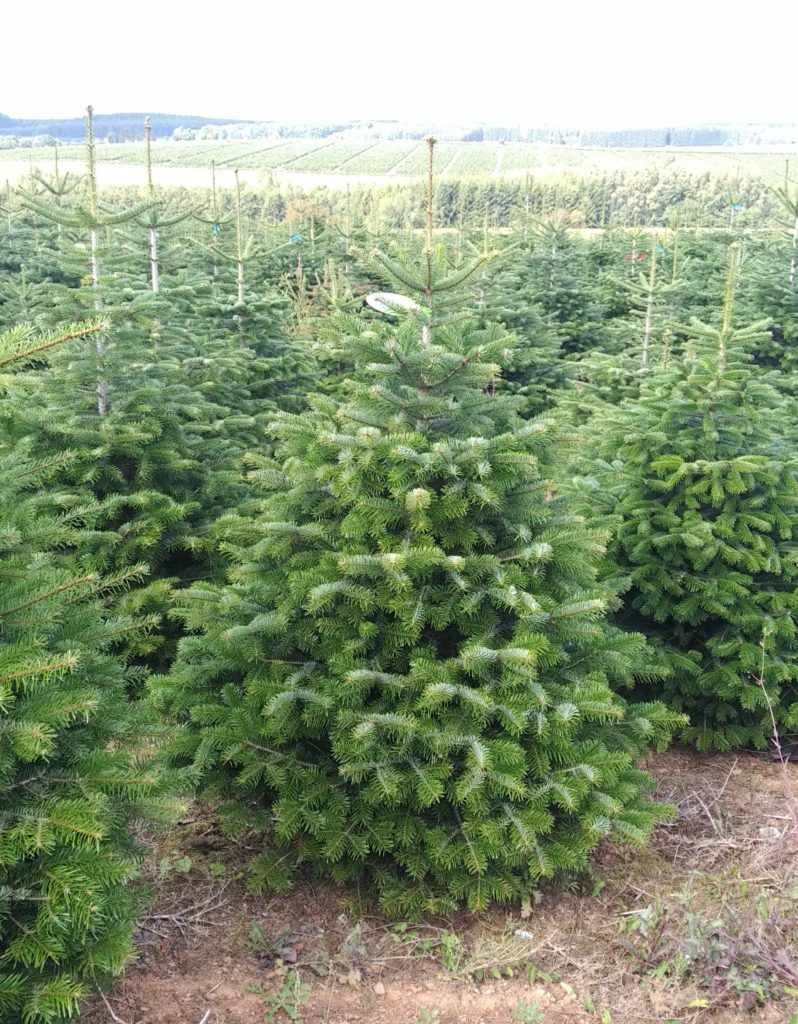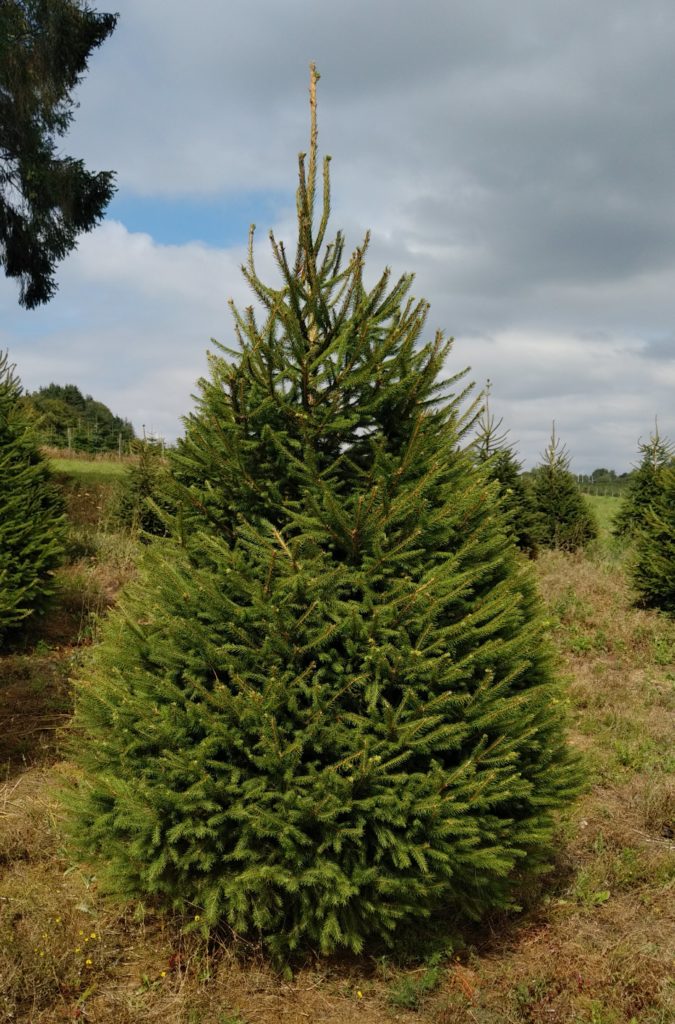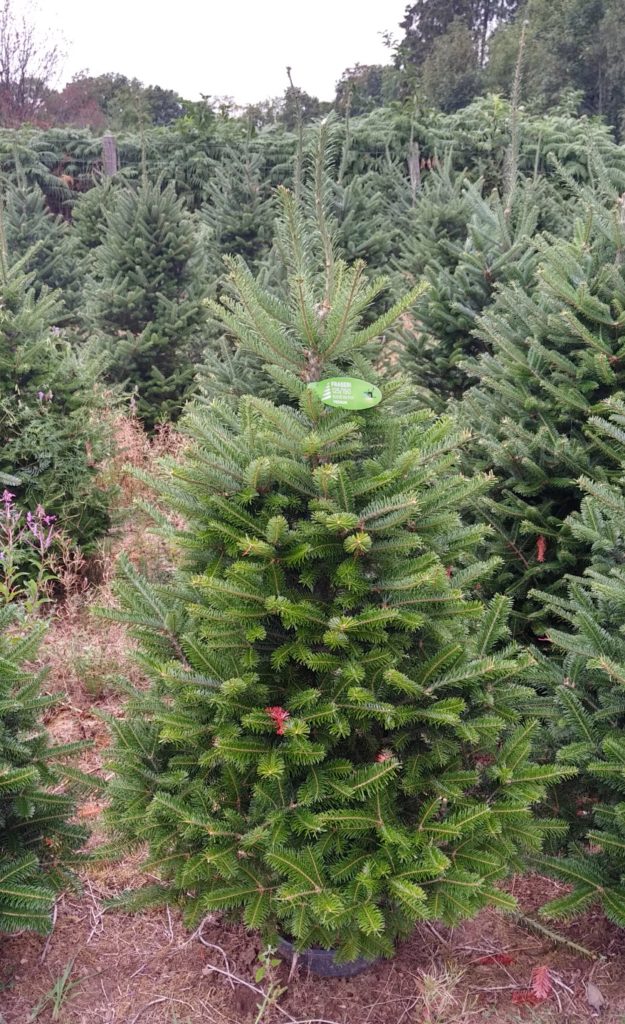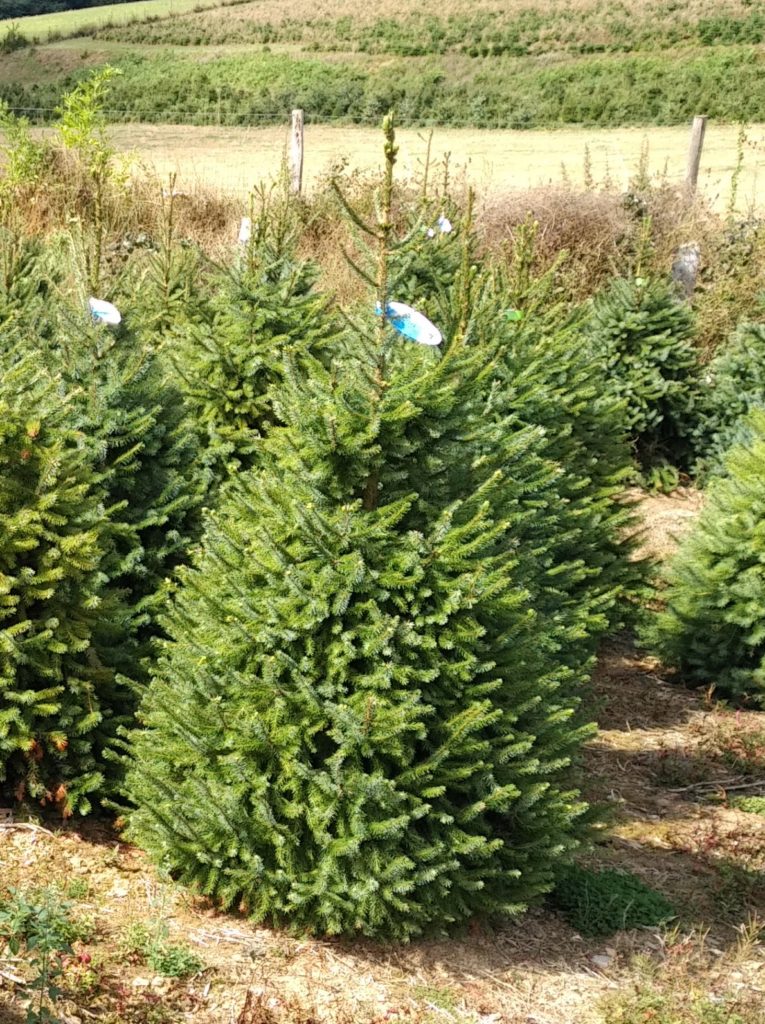
NORDMANN
|
Abies Nordmaniana The Nordmann or Caucasian tree is referred to as the “Rolls Royce” of Christmas trees. Its beautiful pyramidal shape, its dense, shiny foliage and dark green colour are magnificent and it is today the most popular Christmas tree in Europe. Its needles are soft and supple and its silhouette is harmoniously layered. Its excellent resistance allows an earlier installation in the house and contributes to a neat Christmas decoration. Today it represents the majority of Christmas tree sales. Greencap is a pioneer in the cultivation of this tree, which we have learnt to care for and whose cultivation plots are cited as an example throughout Europe. |
 |

EPICEA
|
Picea Abies Spruce was traditionally the most widely used Christmas tree in southern Europe. It is a very beautiful product from our Belgian Ardennes and Brittany, where we manage to produce a robust and full Christmas tree, well balanced from the base to the top. Its foliage is dense and frank green. Its fragrance in our homes at Christmas is irreplaceable. Greencap markets spruces of all sizes and in all forms of packaging, including trees grown in pots. |
 |

NOBILIS
|
Abies Procera This fir tree owes its titles of nobility to its majestic port and its magnificent blue foliage. It is the one that best keeps its needles. It also leaves an incomparable forest scent in the room where it is found. A more difficult luxury alternative, but our Breton granite soils are particularly well suited to its difficult cultivation. Its branches are also used by florists and in Christmas decoration. The Greencap teams are well aware of its delicate cultivation and know that its size requires a lot of attention. |
 |

FRASERI
|
Abies Fraseri This tree has two major advantages: it does not shed its needles and gives off a pleasant fragrance. Its foliage is shiny dark green with silvery undersides. Its growth is fast and we regularly give it training prunings. The fraseri is an excellent Christmas tree, little cultivated in our regions, but very present at Greencap in the Belgian Ardennes and in Brittany. |
 |

OMORIKA
|
Picea Omorika It is also called Serbian spruce, where it finds its origins. This fir has a beautiful silver-green colour. Well pruned, it has a perfectly conical shape and a very dense appearance. This fir is mainly grown in pots. |
 |